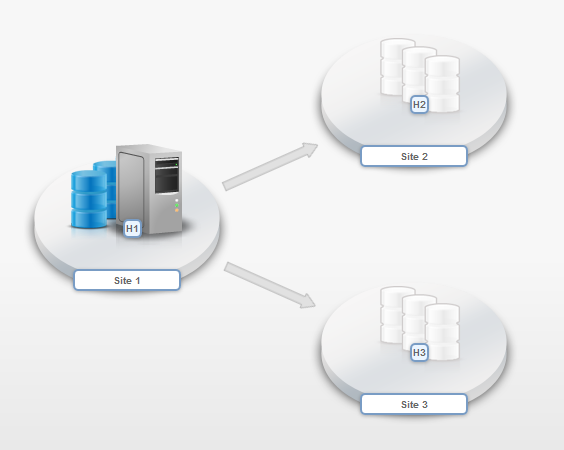System and data availability have always been two of the most important issues for customers. These have become increasingly important with today’s social, highly mobile and interactive environments. IBM has several comprehensive solutions, like GDPS and TPC for Replication (soon to be IBM Copy Services Manager), that offer both data protection and continuous system availability using z/OS HyperSwap technology.
In October 2014, IBM announced a new enhancement to the DS8870 storage system called Multiple Target Peer-to-Peer Remote Copy (MT-PPRC). With this new capability, you can now achieve a higher level of data protection and continuous system availability by maintaining two synchronous copies of the data that protect against a storage system failure or the event of a disaster.
In 2015, IBM extended the value of MT-PPRC by providing mainframe HyperSwap support with this new feature. HyperSwap can move applications and the operating system transparently to either of the two copies of the data without more than a short pause in their operation. HyperSwap operates on IBM's DS8000 Metro Mirror technology which allows replication of data from a primary device to its secondary device. Metro Mirror is a synchronous replication method ensuring that write I/O exists on both the primary and secondary before the I/O is considered complete. The synchronous nature of this replication helps ensure that when HyperSwap automatically swaps to the secondary device; that it is swapping to a fully consistent copy of that device.
The z/OS HyperSwap solution consists of TPC for Replication and the HyperSwap component of z/OS I/O Supervisor (IOS). TPC for Replication provides an end user interface for configuring and monitoring the replication environment, while z/OS HyperSwap monitors the configuration and I/O activities on the devices and performs recovery action (i.e. HyperSwap) when necessary. The HyperSwap component of z/OS I/O Supervisor can also be used with GDPS/PPRC HyperSwap Manager to provide a full end to end service offering for you.
To take advantage of this new HyperSwap protection environment with z/OS HyperSwap, you can create a TPC for Replication Multi-Target ‘Metro Mirror – Metro Mirror’ session. Then using the TPC for Replication GUI or CLI, you can select the desired pairs consisting of a primary and two secondary devices.

When the session is started, Metro Mirror relationships are created between the primary and both sets of secondary devices. Once the Metro Mirror relationships reach a Prepared state, the configuration of all Metro Mirror pairs being managed by the session are given to z/OS HyperSwap in the form of a configuration file. z/OS HyperSwap maintains the configuration file and reacts to failures on the primary devices by performing a HyperSwap to the secondary devices. Once the HyperSwap is completed, system and application programs resume with the secondary devices as the active devices. All of the HyperSwap activities are performed very quickly and transparently to the system and application programs. After the cause of the primary device failure are determined and corrected, you will then have the option to reestablish the HyperSwap protection with the former primary devices as secondary devices.
The TPC for Replication ‘Metro Mirror – Metro Mirror’ session allows for two different policies related to which site z/OS HyperSwap will swap to in the event of a primary site failure. The first option is to allow z/OS to automatically determine which site to swap to. With this option, the z/OS HyperSwap component will make the decision on which of the secondary devices to swap the application to. The second option is to allow a user to set a priority order for the sites. Some customers, while setting up a multi-target configuration for higher availability, still have a preference to which site they want to swap to. This option allows you to tell the z/OS HyperSwap component which site it should attempt to swap to first. However, if z/OS HyperSwap is unable to swap to that site, it will continue to swap to the alternate site.
Multi-target PPRC (MT-PPRC) was introduced to provide immediate availability of data. This support enhances continuous data protection by providing synchronous replication relationships between the primary storage device and additional secondary storage devices. Data written to the primary devices are replicated to multiple secondary devices simultaneously. After a HyperSwap from the initial primary to one of the secondary devices, the new primary devices will then be ready to become the new primary for the remaining secondary storage devices. This will allow establishment of HyperSwap protection using the new Metro Mirror relationships between the new primary storage device and the remaining secondary storage devices without waiting for the former primary storage device to be made available again. If and when the initial primary storage device is made ready again, it then can be added as a new secondary for the current primary storage device. MT-PPRC function with z/OS HyperSwap is available with DS8870 R7.4, TPC-R 5.2.5 and z/OS 1.13 and above with APAR OA46683. The current support allows up to two secondary devices for each primary device. That number may be increased in future supports.